The Colonial Masters Conquer the World
The Colonial Masters Conquer the World
Here we show typical pictorial examples of the Wilhelmine image of masculinity, imbued with the spirit of colonial expansion and calling for heroic adventurers and explorers. The men's self-confident body language speaks of drive, courage and entrepreneurial spirit. The so-called colonial master gesture inscribed this self-image in the photographic memories. The camera accentuated a fundamental difference between the colonisers and the colonised. The social hierarchy becomes clear in the mixed group portraits through the spatial positioning in the foreground and the arrangement of the group members. Their highlighted position is further accentuated by the bright white clothing reflecting the light. The camera's gaze divided the people into two parties and suggested a separation of the world: the "primitive" culture represented by the naked, dark-skinned ethnic group was juxtaposed with the culture of Western civilisation gifted with the light of enlightenment. German colonial officials wanted to assure themselves of their difference from the local population by having their white uniforms washed daily by their domestic servants. In this way, they tried to prevent adaptation and assimilation to the local culture and the danger of "Verkafferung", as they pejoratively called the process of becoming involved in the way of life and thinking of the natives.
In earlier times, the sceptre and sword were considered signs of rule. In the context of the colonies, they became the stick and the whip, which were meant to express the state's monopoly on the use of force. The photographic self-portraits thus confirmed the self-imageof the German colonial troops. On closer inspection, however, this self-portrayal proves to be ambivalent. Views of military exercises make it clear that the German colonial army was dependent on hired mercenaries from the local peoples, such as the Askari in German East Africa or the Fitifita on Samoa. Even if the indigenous population is often reduced to a role as servants and subjects in the images, the German colonial power depended on the knowledge and support of the local population, whether as pilots, navigators familiar with the waters, oras porters, interpreters, middlemen, intermediaries or workers.
Do you know more? Please send us your notes and comments.
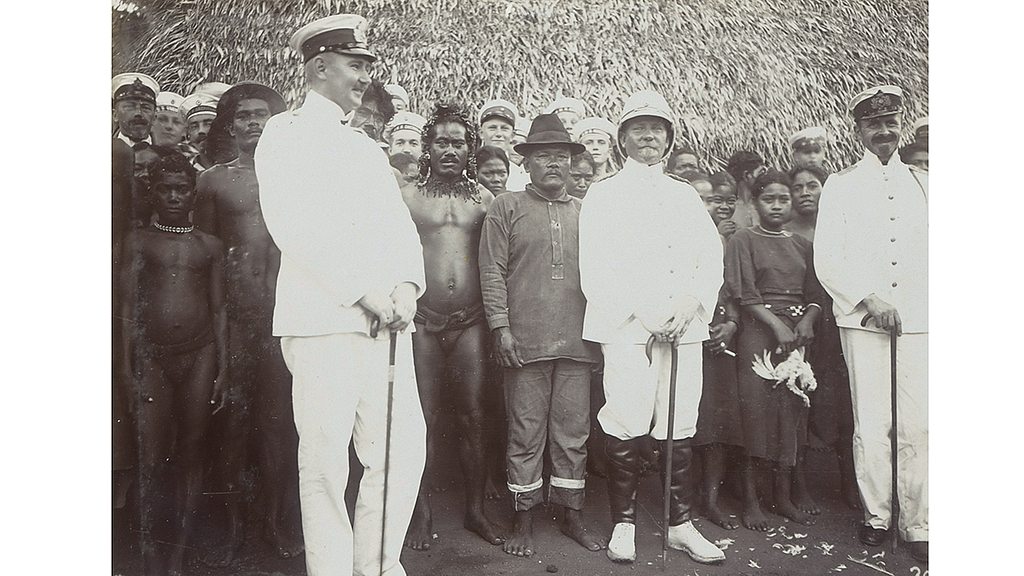
Unbekannter Fotograf: Indigene von der Insel Kagon, in: Ostasienreise S.M.S. GNEISENAU, 1909 - 1914 © Archiv DSM [Die historische Bildunterschrift gibt rassistische Sprache wieder und lautete: „Eingeborene von der Insel Kagon“]
Name of the speaker: Neele Bahr
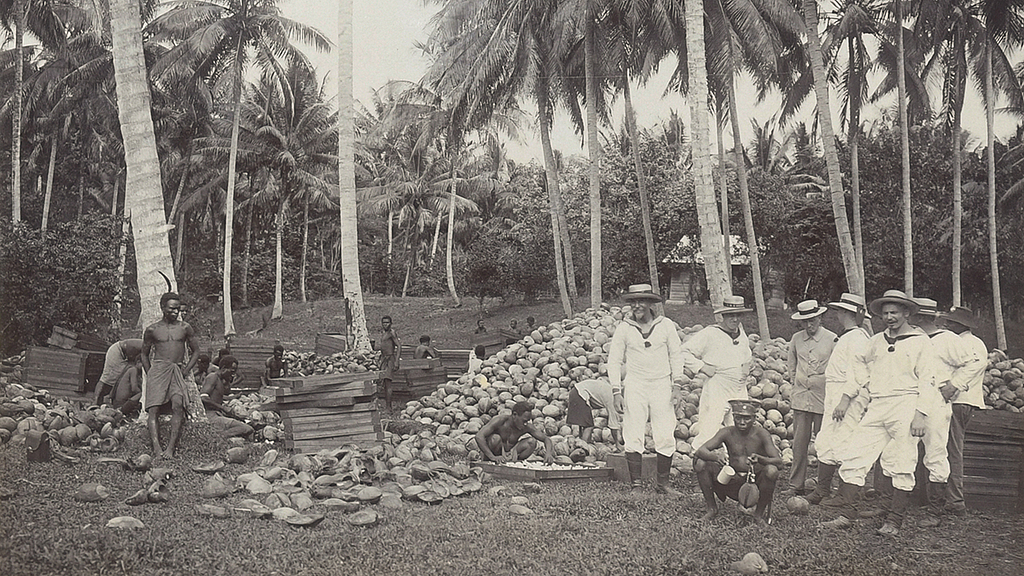
Unbekannter Fotograf: Koprafarm in der Südsee, in: Ostasienreise S.M.S. GNEISENAU, 1909 - 1914 © Archiv DSM
Name of the speaker: Vivian Koch
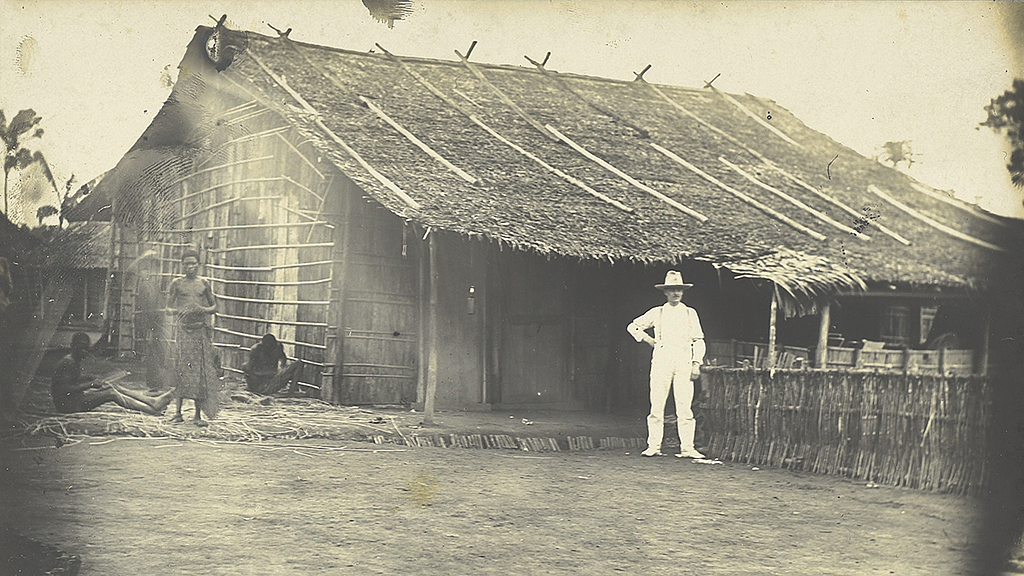
Unbekannter Fotograf: Kamerun, in: Fotosammlung - Deutsche Kolonien in Afrika, ca. 1900 © Archiv DSM
Name of the speaker: Neele Bahr
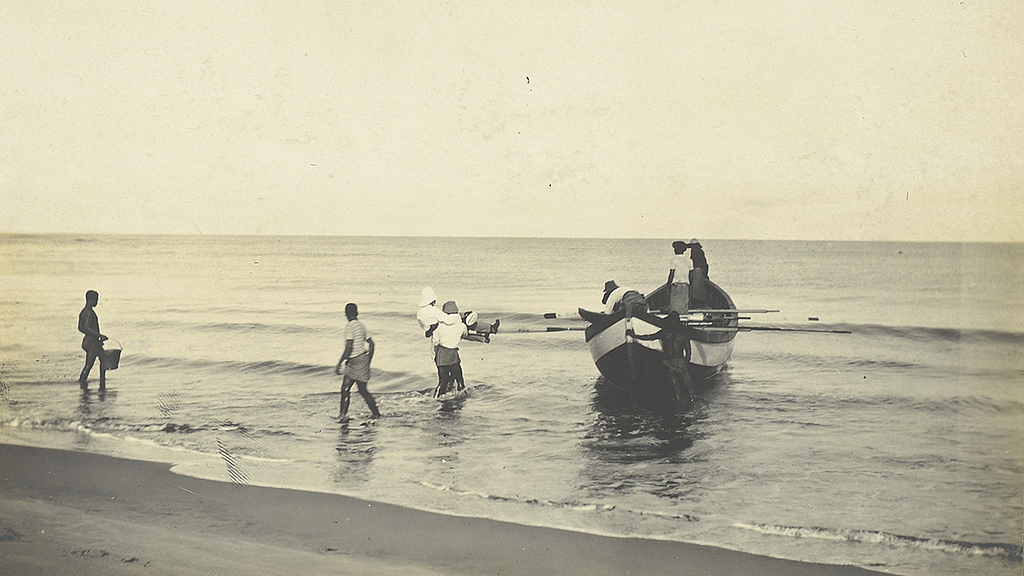
Unbekannter Fotograf: Einschiffen in Plantation, in: Fotosammlung - Deutsche Kolonien in Afrika, ca. 1900 © Archiv DSM
Name of the speaker: Judith Beneker
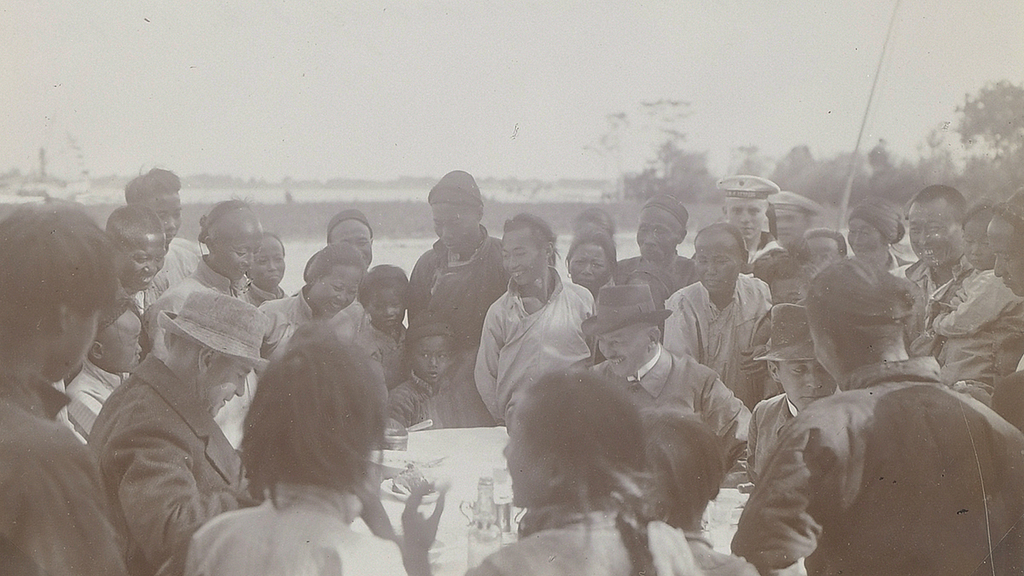
Unbekannter Fotograf: Geburtstagstafel der Offiziere ….und China schaut zu!, in: S.M.S. Kleiner Kreuzer LEIPZIG, 1906 - 1914 © Archiv DSM
Name of the speaker: Judith Beneker
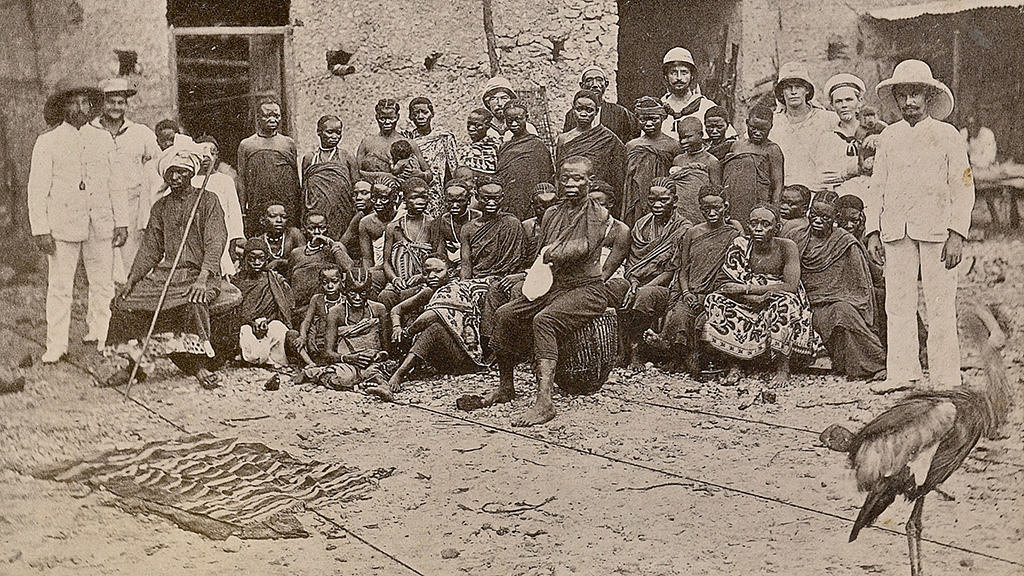
Unbekannter Fotograf: Weiber aus Bagamoyo; in der Mitte der Mann, welchem von Buschiri die Hände abgehauen sind, in: Obermatrose E. Barnutz. Zur Erinnerung an meine Dienstzeit in Ost - Afrika an Bord der S.M.S. CAROLA, 1889 - 1891 © Archiv DSM.
Name of the speaker: Neele Bahr
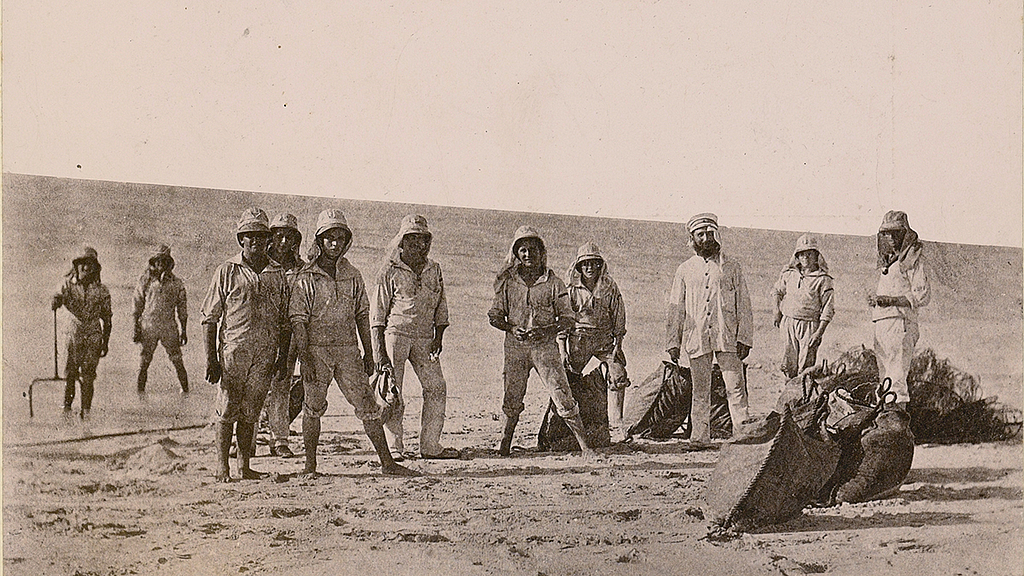
Unbekannter Fotograf: Sandholen, in: Obermatrose E. Barnutz. Zur Erinnerung an meine Dienstzeit in Ost - Afrika an Bord der S.M.S. CAROLA, 1889 - 1891 © Archiv DSM
Name of the speaker: Louis Wellkamp
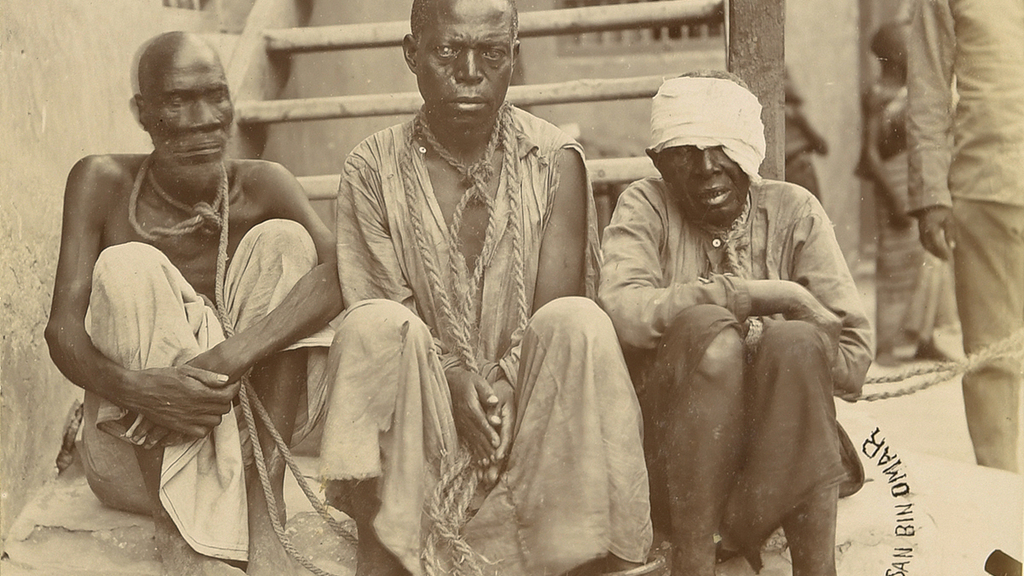
Unbekannter Fotograf: Haßan bin Omari, in: Reise-Erinnerungen Afrika, 1895 © Archiv DSM
Name of the speaker: Michel Spiro
